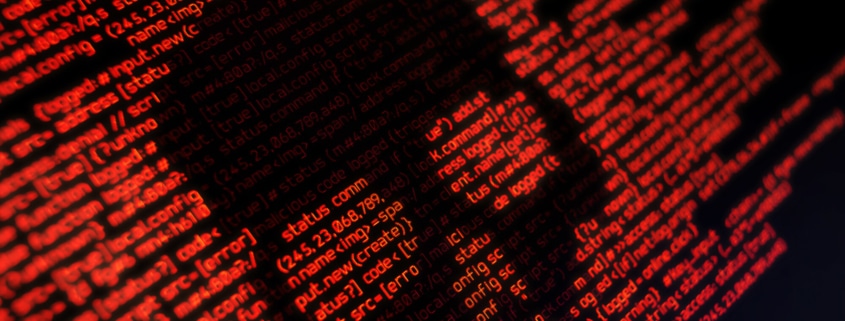Phishing, Malware, and Ransomware Oh My
Phishing, malware, and ransomware are different types of data attacks that can affect your systems and devices. Data breaches are serious, primarily when they target your business. There are many ways to prevent malicious software from harming, but first, you must understand how they operate. Malware is short for malicious software, and it’s typically used as a broad term under which you can find ransomware, another form of data attacking. Phishing, on the other hand, is the act of gathering information, such as sensitive data. Phishing, malware, and ransomware can all have serious consequences. Once you’re aware of how they work, your business can protect itself against any data breaches.
What Is Phishing?
Phishing is considered a cybercrime in which a target or targets are contacted by someone posing as a legitimate institution. Cybercriminals lure people to provide sensitive data, such as passwords, bank account information, or credit card numbers. Once the cybercriminal has this information, it can result in financial loss or identity theft. The consequences of phishing are dire and shouldn’t be taken lightly. Ensuring your employees know what common phishing scams look like will help prevent any damage from occurring. Here are a few ways to tell an email actually might be a threat:
- Sense of urgency: the criminal might tell you that you only have a few minutes to respond.
- Hyperlinks: a link may not be what it appears to be; hover over the link to see where it actually goes, and look for letters missing or misspelled words.
- Too good to be true: an email may claim you won a prize or something of the like.
- Attachments: if an attachment looks sketchy or unfamiliar, never download or open it.
- Unusual sender: an email may appear to be from someone you know, but on closer examination is actually from a different address.
What Is Malware?
In short, malware is any type of malicious software. It refers to all software intended to disrupt or harm a system. Malware gains unauthorized access to your device, typically without you or your business knowing it, and wreaks havoc. It’s not just limited to devices, either. Malicious software can affect your company’s servers and computer networks. It’s so important to take proactive measures against malware to prevent any damage.
Malware usually gains access after someone takes action. Your employee might click on a seemingly harmless link in an email or a website that could lead to malware infecting their device. After that, the malware can gain access to your system and multiple itself to become an uncontrollable issue. It can be hard to know when your computer is infected, but some signs to look for are system crashes and actions taken without user initiation. There are a variety of ways malware presents itself, including:
- Virus
- Worm
- Trojan
- Bot/Botnet
- Ransomware
- Adware
- Spam
- Rootkits
- Logic Bombs
- Keyloggers

What Is Ransomware?
As you can see from the list above, ransomware is a type of malware. It is specifically designed to lock users out of their system or deny access to data. Once the attacker encrypts the victim’s files, they demand a ransom to restore data access. Ransomware is such a dangerous and harmful type of malware because of this payment request. Costs can range anywhere from a few hundred dollars to thousands of dollars, payable in Bitcoin. Falling victim to ransomware could be detrimental to a company, especially when sensitive data and information are involved.
There are a variety of ways ransomware can gain access to a computer. You and your employees should be aware of these typical schemes so that you don’t fall for a dangerous ploy. One of the most common ransomware scams is through attachments that come in an email, made to look like a file they can trust. But once they’re downloaded and opened, they can take over the victim’s device. Another delivery system is through security holes in your computer. This method doesn’t involve tricking anyone but instead preys on security weaknesses. The threat of ransomware is a great reason why companies should back-up their data offsite.
Preventing Phishing, Malware, and Ransomware
The first step in preventing phishing, malware, and ransomware is to know what they are and how they can access your devices. Once you and your employees know what to look for, it’s easier to prevent any software or cybercriminal from doing damage because you can recognize when a breach might be happening. Additional protection for your business can come from utilizing secure cloud services for data back-up. This way, if a breach ever does occur, your information is safe elsewhere. There are some other ways your business can prevent phishing, malware, and ransomware. Here are some examples:
- Practice safe browsing.
- Secure your email and know how to spot potential scams.
- Carefully review any attached documents.
- Avoid clicking on links unless you know they’re safe.
- Customize spam filters to your company’s needs.
- Log out of any open browsers once you’re done with them.
- Ensure you have strong and unique passwords, and change them often.
- Look into using a password manager.
- Ensure you are on a secure connection. Look for a padlock to the left of the URL to know for sure.
- Avoid web addresses that start with “HTTP” instead of “HTTPS.”
- Update all operating systems, browsers, and plugins.
- Enable click-to-play plugins to keep Flash and Java from running unless you allow them to.
- Layer your security by using a combination of anti-malware, anti-ransomware, and firewall.
- Be aware of social engineering.
- If something looks suspicious, investigate it further.
- Be aware of cold calling and fake tech support numbers.
- Never confirm personal information over text.
- Don’t fall for tech support scams, such as software security detecting a virus and asking you for money to fix it.
- Install antivirus software on your devices and mail servers.
- Take extra security measures, like network monitoring by an IT company.
Avoiding Threats to Your Business
Phishing, malware, and ransomware are all threats to your business. By targeting your devices and servers, malicious software and cybercriminals can gain access to vital information and cause harm. By staying aware of the various cyber threats, you are more likely to avoid falling victim to any scams. Further measures like antivirus software and network monitoring can keep you and your company even more protected against phishing, malware, and ransomware attacks.



